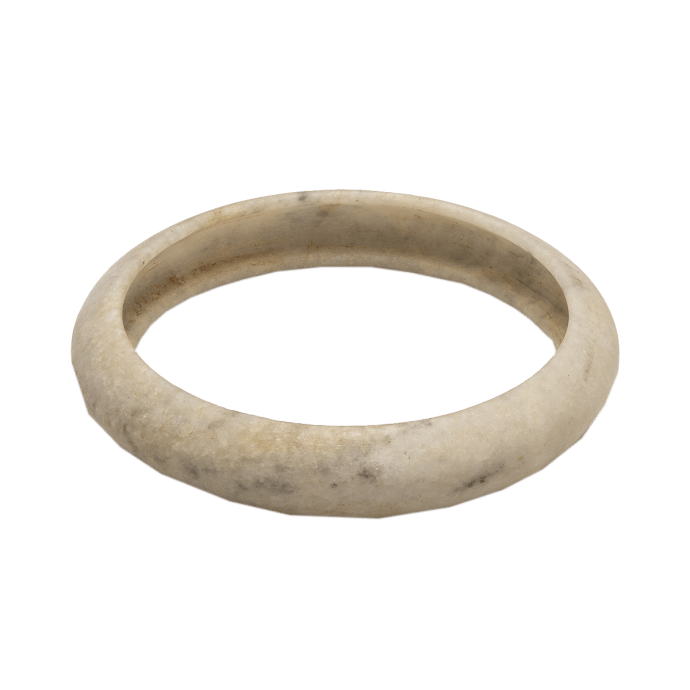


Description
The bracelet was sculpted out of a black-specked white anhydrite rock, with its outside finely smoothed out to reveal the natural texture of the stone and its inside further carved down to a U-shaped cross-section.
Provenance
Hans Blaser Collection, Kloten, Zurich, acquired in the 1970s With Galerie Nefer, Zurich, 1991; Private Collection, Switzerland
Exhibition
On Loan: Antikenmuseum Basel & Sammlung Ludwig, 1998 – 2010
Literature
The earliest bracelets in ancient Egypt were made of flint and stone during the Predynastic and Early Dynastic periods, and Egyptians of the time liked to wear several bracelets piled up on the forearms. See W. Needler, Predynastic and Archaic Egypt in the Brooklyn Museum, Brooklyn, 1984, pp. 314-315.
Ancient Egyptians favored both white and blue anhydrite as a suitable crystal material for carving for ornamental purposes. Bracelets of anhydrite and alabaster were made from the Old Kingdom onwards, with anhydrite particularly popular in the Middle Kingdom.
Our bracelet’s curved cross section is an unusual feature, possibly derived from the design of some earlier bracelets made of rolled and hammered sheet gold. The closest comparison is an Early Dynastic child's bracelet from Khasekhemui, now in the Metropolitan Museum (Accession Number: 01.4.2; Fig. 1). In addition, there are several Old Kingdom gold bangles of the same form from Saqqara, now in the Egyptian Museum, Cairo (JE 92655-53, 92655-56, 92655-70).
Condition
Good, wearable condition with minor surface wear commensurate with age.. Almost invisible break, now repaired. Possible traces of repair of a minor hairline crack (natural cleavage?) on the inside.